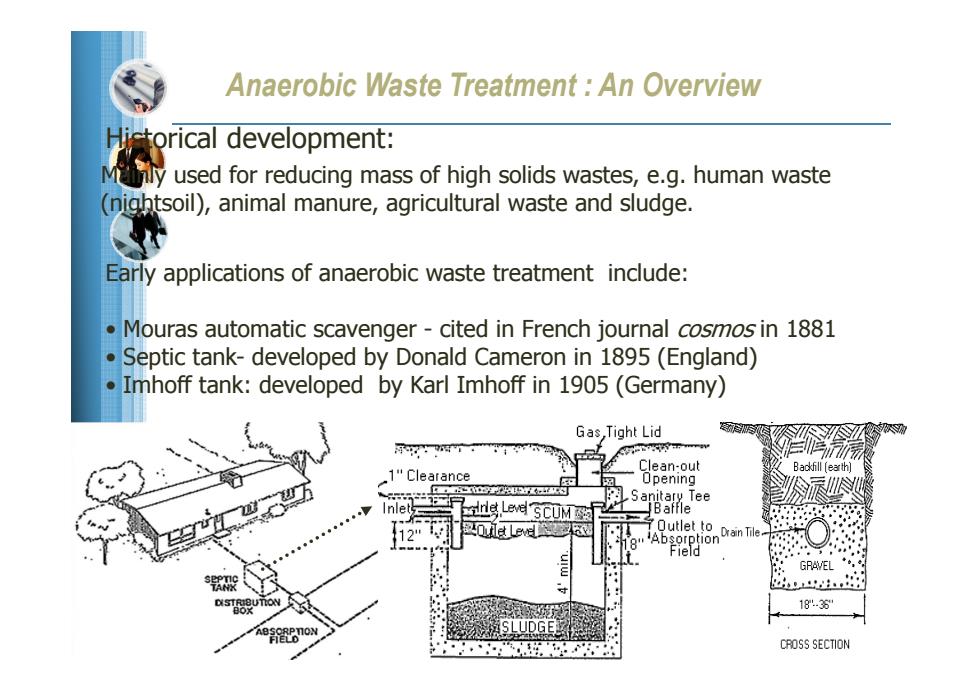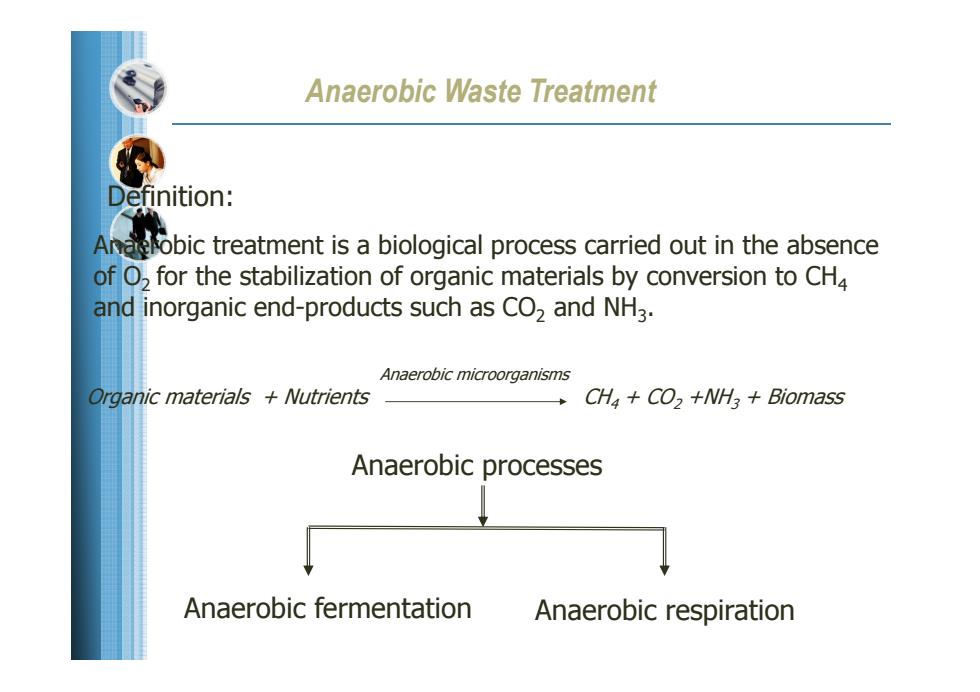
Anaerobic Waste Treatment An Overview Hictorical development: Mly used for reducing mass of high solids wastes,e.g.human waste (nightsoil),animal manure,agricultural waste and sludge. Early applications of anaerobic waste treatment include: Mouras automatic scavenger-cited in French journal cosmos in 1881 Septic tank-developed by Donald Cameron in 1895 (England) Imhoff tank:developed by Karl Imhoff in 1905 (Germany) Gas ,Tight Lid Clean-out Backfill [earth] 1"Clearance Opening Sanitar以Tee nle ne Leve SCUM Baffle Outlet to Absorption Drain Tile Field GRAVEL 18.3 CROSS SECTION
Anaerobic Waste Treatment : An Overview Historical development: Mainly used for reducing mass of high solids wastes, e.g. human waste (nightsoil), animal manure, agricultural waste and sludge. Early applications of anaerobic waste treatment include: • Mouras automatic scavenger - cited in French journal cosmos in 1881 • Septic tank- developed by Donald Cameron in 1895 (England) • Imhoff tank: developed by Karl Imhoff in 1905 (Germany)

Anaerobic Waste Treatment Definition: Analobic treatment is a biological process carried out in the absence of O,for the stabilization of organic materials by conversion to CH4 and inorganic end-products such as CO2 and NH3. Anaerobic microorganisms Organic materials Nutrients CH CO2 +NH3 Biomass Anaerobic processes Anaerobic fermentation Anaerobic respiration
Anaerobic Waste Treatment Definition: Anaerobic treatment is a biological process carried out in the absence of O2 for the stabilization of organic materials by conversion to CH 4 and inorganic end-products such as CO 2 and NH 3. Organic materials + Nutrients CH4 + CO2 +NH3 + Biomass Anaerobic microorganisms Anaerobic processes Anaerobic fermentation Anaerobic respiration